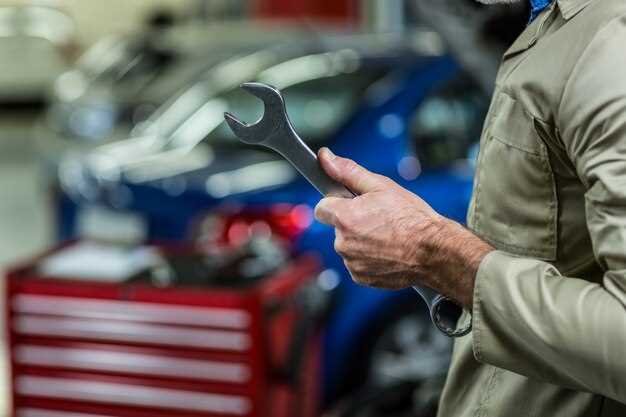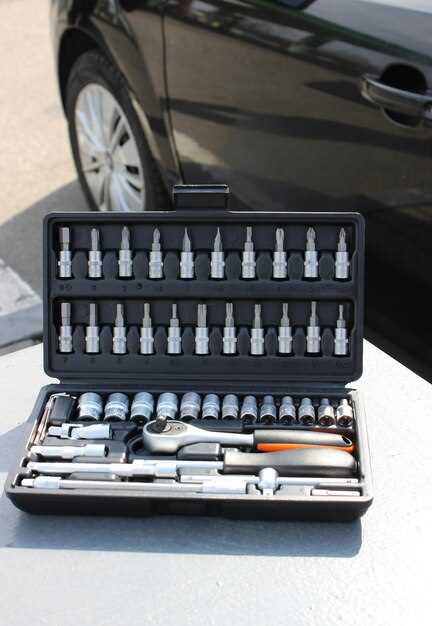
Owning a car comes with its own set of responsibilities, and being prepared is essential for any car owner. Whether you are a seasoned mechanic or a novice driver, having the right tools at your disposal can save you time, money, and ensure the safety of your vehicle. A well-equipped kit can help address common issues that arise during your daily commute or road trips, making your driving experience smoother and more enjoyable.
In this article, we will explore the ten essential tools that every car owner should have in their kit. From basic maintenance to emergency situations, these items will empower you to tackle a variety of challenges that come your way. By investing in the right tools, you not only enhance your car ownership experience but also gain the confidence to handle many automotive tasks on your own.
Having a reliable tool kit is not just about convenience; it’s about being proactive and prepared for any situation that might arise. As we dive into these must-have tools, consider how each one can make your life easier and keep your vehicle running at its best.
Choosing the Right Socket Set for Home Auto Repairs
Selecting the appropriate socket set is crucial for effective car maintenance. A quality socket set equips you with the necessary tools to tackle various automotive tasks, from changing oil to replacing spark plugs. It is essential to consider the size and types of sockets you need based on your vehicle’s specifications.
Firstly, choose between metric and SAE (Society of Automotive Engineers) sizes. Many newer cars use metric sizes, while older vehicles may require SAE sockets. A versatile socket set typically includes both types, making it easier to work on any car.
Next, consider the drive size of the sockets. Common sizes are 1/4-inch, 3/8-inch, and 1/2-inch, each suited for different applications. A 1/4-inch drive is ideal for light maintenance tasks, whereas a 1/2-inch drive is best for heavy-duty jobs. Having a variety of drive sizes in your collection will enhance your flexibility when performing repairs.
Additionally, examine the materials and finish of the sockets. Chrome vanadium and chrome molybdenum are popular choices due to their durability and resistance to corrosion. A polished chrome finish not only looks great but also makes cleaning easier after use.
Don’t forget to include a range of socket types in your set. Standard sockets are suitable for most tasks, while deep sockets provide extra depth for recessed fasteners. Universal joints and wobble extensions can further facilitate working in tight spaces.
Lastly, invest in a socket set that comes with a sturdy storage case. An organized set allows for quick access and helps prevent loss. Whether you’re a seasoned mechanic or a novice car owner, the right socket set is a valuable addition to your maintenance tools, enabling you to perform home auto repairs with confidence.
How to Use a Multimeter for Electrical Issues in Your Car

A multimeter is an essential tool for car maintenance, helping you diagnose various electrical problems. This versatile device can measure voltage, current, and resistance, making it invaluable for any car toolkit. Follow these steps to effectively use a multimeter in your vehicle.
1. Safety First: Before starting, ensure the car is off and the keys are removed from the ignition. Wear safety gloves and goggles to protect yourself from any electrical hazards.
2. Set Up the Multimeter: Turn on your multimeter and select the appropriate setting based on what you need to measure. For voltage, set it to the DC voltage setting; for resistance, choose the ohms setting. If you’re measuring current, set it to the appropriate scale, usually denoted as “A” for amperes.
3. Testing Voltage: To test the battery voltage, touch the red probe to the positive terminal and the black probe to the negative terminal. A healthy car battery should read around 12.6 volts or higher. If the reading is significantly lower, the battery may need charging or replacement.
4. Checking Continuity: To diagnose wiring issues, use the continuity test. With the multimeter set to the ohm scale, touch the probes to both ends of the wire or component. If the meter beeps or shows a low resistance value, the circuit is intact. An infinite resistance reading indicates a break in the circuit.
5. Measuring Current: For current measurements, you must connect the multimeter in series with the circuit. First, turn off the car and disconnect the battery. Remove the fuse or wire from the circuit you’re testing, then connect one probe to the battery terminal and the other to the removed fuse or wire. Restore the circuit and turn on the car to read the current draw.
6. Troubleshooting Components: Use the multimeter to check specific electrical components such as alternators, motors, and sensors. Measure voltage at the component terminals while the car is running. If there’s a significant drop in voltage, this may indicate a faulty component.
7. Document Your Findings: Keep a log of your measurements and any anomalies you detect. This can help you pinpoint recurring issues and is essential for any professional repairs.
In conclusion, a multimeter is a powerful tool that allows car owners to troubleshoot electrical problems effectively. Regular use of this tool can aid in maintaining your vehicle’s electrical system and prevent more significant issues down the line.
Basic Tire Maintenance: Tools You Need for Safe Driving

Proper tire maintenance is essential for ensuring the safety and performance of your vehicle. Having the right tools in your maintenance kit can make a significant difference in effectively managing tire care. Here are some must-have tools that every car owner should consider for safe driving.
The first essential tool is a tire pressure gauge. Maintaining the correct tire pressure is crucial for optimal performance and fuel efficiency. A reliable gauge allows you to measure the pressure accurately, helping you avoid underinflation or overinflation, which can lead to tire failure.
Another important tool is a tire inflator or portable air compressor. This allows you to quickly inflate your tires if they are low on air. Many models are compact and can be stored easily in your trunk, making them convenient for emergencies.
A tire tread depth gauge is also part of a comprehensive maintenance kit. This tool helps you assess the wear on your tires, ensuring they are safe for driving. Knowing the tread depth can prevent hydroplaning and improve traction, especially in wet conditions.
A lug wrench is necessary for changing a tire. It allows you to loosen and tighten the lug nuts securely. Investing in a high-quality lug wrench will make tire changes more manageable and safer.
Additionally, a tire repair kit is a valuable asset for addressing minor punctures. These kits typically include plugs and tools required for quick repairs, enabling you to get back on the road without needing a full tire replacement.
Lastly, a jack is essential for lifting your vehicle during tire changes. A sturdy and reliable jack ensures that the vehicle is lifted safely, allowing you to work efficiently without compromising safety.
In summary, having a selection of essential tools in your tire maintenance kit can enhance your overall driving safety. By incorporating these tools into your routine, you can ensure your tires are well maintained and ready for the road ahead.




